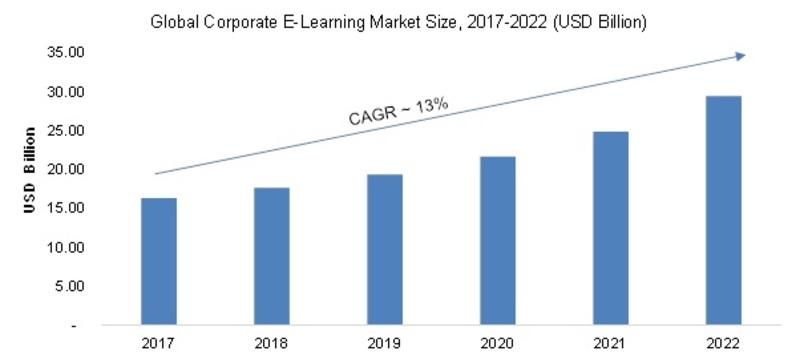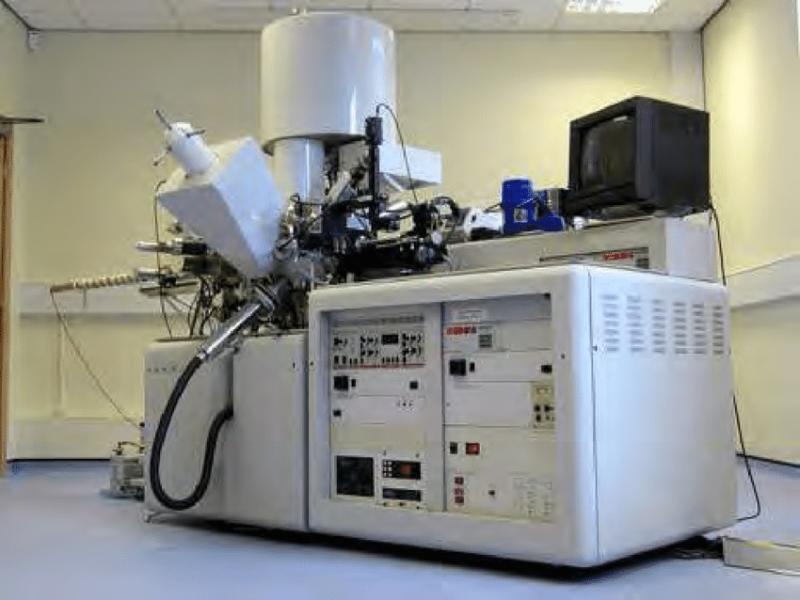Press release
X-ray Photoelectron Spectroscopy Market Unlocking Advanced Surface Analysis Techniques for Breakthrough Innovations and Global Growth
𝐈𝐧𝐭𝐫𝐨𝐝𝐮𝐜𝐭𝐢𝐨𝐧:
The X-ray Photoelectron Spectroscopy (XPS) market has been steadily growing, driven by the increasing demand for surface analysis and the need for precise characterization of materials in various industries. XPS, also known as Electron Spectroscopy for Chemical Analysis (ESCA), is a powerful analytical technique that measures the elemental composition, chemical state, and electronic state of the materials' surfaces.
The global X-ray photoelectron spectroscopy market is projected to reach a value of US$990.4 million by the end of 2031, up from US$582.1 million in 2023. This growth reflects a compound annual growth rate (CAGR) of 7.0% from 2024 to 2031.
The significance of XPS lies in its ability to provide insights at a molecular level, making it indispensable in research and industrial applications across multiple sectors. This article explores the rapid growth of the XPS market, the role of advanced surface analysis techniques, and the breakthroughs driving innovations in diverse industries, as well as the emerging opportunities for global growth.
𝐈𝐧 𝐚 𝐧𝐮𝐭𝐬𝐡𝐞𝐥𝐥, 𝐭𝐡𝐞 𝐏𝐞𝐫𝐬𝐢𝐬𝐭𝐞𝐧𝐜𝐞 𝐌𝐚𝐫𝐤𝐞𝐭 𝐑𝐞𝐬𝐞𝐚𝐫𝐜𝐡 𝐫𝐞𝐩𝐨𝐫𝐭 𝐢𝐬 𝐚 𝐦𝐮𝐬𝐭-𝐫𝐞𝐚𝐝 𝐟𝐨𝐫 𝐬𝐭𝐚𝐫𝐭-𝐮𝐩𝐬, 𝐢𝐧𝐝𝐮𝐬𝐭𝐫𝐲 𝐩𝐥𝐚𝐲𝐞𝐫𝐬, 𝐢𝐧𝐯𝐞𝐬𝐭𝐨𝐫𝐬, 𝐫𝐞𝐬𝐞𝐚𝐫𝐜𝐡𝐞𝐫𝐬, 𝐜𝐨𝐧𝐬𝐮𝐥𝐭𝐚𝐧𝐭𝐬, 𝐛𝐮𝐬𝐢𝐧𝐞𝐬𝐬 𝐬𝐭𝐫𝐚𝐭𝐞𝐠𝐢𝐬𝐭𝐬, 𝐚𝐧𝐝 𝐚𝐥𝐥 𝐭𝐡𝐨𝐬𝐞 𝐰𝐡𝐨 𝐚𝐫𝐞 𝐥𝐨𝐨𝐤𝐢𝐧𝐠 𝐭𝐨 𝐮𝐧𝐝𝐞𝐫𝐬𝐭𝐚𝐧𝐝 𝐭𝐡𝐢𝐬 𝐢𝐧𝐝𝐮𝐬𝐭𝐫𝐲. 𝐆𝐞𝐭 𝐚 𝐠𝐥𝐚𝐧𝐜𝐞 𝐚𝐭 𝐭𝐡𝐞 𝐒𝐚𝐦𝐩𝐥𝐞 𝐫𝐞𝐩𝐨𝐫𝐭 𝐚𝐭 - https://www.persistencemarketresearch.com/samples/18022
𝐔𝐧𝐝𝐞𝐫𝐬𝐭𝐚𝐧𝐝𝐢𝐧𝐠 𝐗-𝐫𝐚𝐲 𝐏𝐡𝐨𝐭𝐨𝐞𝐥𝐞𝐜𝐭𝐫𝐨𝐧 𝐒𝐩𝐞𝐜𝐭𝐫𝐨𝐬𝐜𝐨𝐩𝐲 (𝐗𝐏𝐒)
XPS is a non-destructive technique that measures the energy levels of photoelectrons emitted from a material when exposed to X-rays. The resulting spectra provide detailed information about the elements present on the surface, their chemical states, and the bonding environment. With high sensitivity and resolution, XPS enables the analysis of thin films, surfaces, and interfaces, which is crucial for understanding the properties and behaviors of materials in applications such as material science, nanotechnology, electronics, and biomaterials.
The market for XPS has evolved over the years, driven by advancements in instrumentation, software, and sample preparation techniques. The increasing demand for high-performance materials in industries such as semiconductors, automotive, and pharmaceuticals has further accelerated the need for efficient surface analysis methods like XPS. Additionally, XPS plays a crucial role in the development of new materials for energy storage, catalysts, coatings, and sensors, among others.
𝐊𝐞𝐲 𝐃𝐫𝐢𝐯𝐞𝐫𝐬 𝐨𝐟 𝐗𝐏𝐒 𝐌𝐚𝐫𝐤𝐞𝐭 𝐆𝐫𝐨𝐰𝐭𝐡
Increasing Research and Development Activities: The rise in research and development (R&D) activities across industries is one of the primary drivers of the XPS market. As companies strive to develop innovative materials with superior properties, the need for advanced surface characterization techniques becomes more critical. XPS helps researchers and scientists gain detailed information about the surface composition, which is essential for improving the performance of materials in various applications, from aerospace to biomedical devices.
Technological Advancements in XPS Instruments: Ongoing innovations in XPS instrumentation, such as the development of more compact, affordable, and high-throughput systems, have made XPS more accessible to a wider range of industries and research institutions. These advancements include improvements in detector technology, enhanced software for data analysis, and the integration of XPS with other complementary techniques like Atomic Force Microscopy (AFM) and Scanning Electron Microscopy (SEM), enabling more comprehensive and reliable surface analysis.
Growing Demand from the Semiconductor Industry: The semiconductor industry is one of the most prominent users of XPS, where it is employed for the analysis of thin films, interfaces, and materials used in microelectronics. As the demand for smaller, faster, and more energy-efficient electronic devices continues to grow, XPS is being increasingly used to characterize new materials in the development of transistors, memory devices, and integrated circuits. This trend has resulted in increased investments in XPS technology, driving the growth of the market.
Surge in Nanotechnology and Materials Science: Nanotechnology and materials science have seen significant advancements in recent years, with numerous applications in fields like electronics, energy storage, coatings, and drug delivery. XPS plays a crucial role in the development of nanomaterials, as it allows for precise surface analysis at the nanoscale level. The need for advanced surface characterization techniques in nanotechnology, where even small changes in surface composition can have significant impacts on material properties, is expected to continue driving demand for XPS solutions.
Environmental and Sustainability Considerations: Increasing concerns about environmental impact and sustainability are prompting industries to adopt cleaner, more efficient materials and processes. XPS is an essential tool for evaluating the environmental performance of materials, particularly in the context of surface coatings, corrosion resistance, and pollutant detection. The growing emphasis on environmental regulations and sustainability is likely to fuel further demand for XPS systems in industries such as automotive, energy, and chemicals.
𝐁𝐫𝐞𝐚𝐤𝐭𝐡𝐫𝐨𝐮𝐠𝐡 𝐈𝐧𝐧𝐨𝐯𝐚𝐭𝐢𝐨𝐧𝐬 𝐢𝐧 𝐗𝐏𝐒 𝐓𝐞𝐜𝐡𝐧𝐨𝐥𝐨𝐠𝐲
The XPS market has seen several innovations that have expanded its application range and improved its capabilities. These breakthroughs are shaping the future of surface analysis and creating new opportunities in diverse industries.
In Situ and Real-Time XPS: In situ and real-time XPS are among the most significant advancements in the field. These techniques enable the analysis of materials under operational conditions, such as during chemical reactions or material processing. This innovation allows researchers to gain a deeper understanding of surface behavior in real-world scenarios, such as catalytic reactions, corrosion processes, and thin-film deposition. In situ XPS is increasingly being used in industries like energy, automotive, and electronics, where understanding material behavior under dynamic conditions is crucial for performance optimization.
Multi-technique Integration: The integration of XPS with other surface analysis techniques, such as Raman spectroscopy, X-ray diffraction (XRD), and scanning probe microscopy (SPM), is enhancing the analytical power of XPS systems. By combining the strengths of multiple techniques, users can gain more comprehensive insights into the structure, composition, and properties of materials, providing more accurate and detailed data for research and development.
High Throughput XPS: With the increasing demand for faster analysis and data generation, high-throughput XPS systems are being developed to accommodate large sample volumes and high-speed analysis. These systems are designed to quickly analyze multiple samples with minimal user intervention, making them ideal for applications in industrial quality control, product development, and large-scale manufacturing processes. The ability to conduct rapid, high-throughput analyses is expected to become increasingly important as industries like electronics and automotive continue to scale production.
Portable XPS Systems: Portable XPS systems have emerged as a game-changing innovation, allowing for surface analysis in the field or in challenging environments. These compact, lightweight systems enable on-site analysis of materials in industries such as mining, construction, and environmental monitoring. The ability to conduct XPS analysis in real-time, without the need for sending samples to a laboratory, enhances the efficiency and effectiveness of various applications.
𝐑𝐞𝐠𝐢𝐨𝐧𝐚𝐥 𝐌𝐚𝐫𝐤𝐞𝐭 𝐈𝐧𝐬𝐢𝐠𝐡𝐭𝐬
The XPS market is experiencing significant growth across various regions, driven by advancements in research, increasing industrial demand, and technological innovations. Key regions include North America, Europe, Asia-Pacific, and the Rest of the World.
North America: North America is one of the largest markets for XPS, primarily due to the presence of leading research institutions, universities, and high-tech industries in the region. The demand for XPS in industries such as electronics, semiconductors, aerospace, and pharmaceuticals is driving market growth. The United States, in particular, is expected to remain a dominant player in the market, with significant investments in R&D and technology adoption.
Europe: Europe is another key region for the XPS market, with a strong presence of automotive, chemical, and material science industries. Countries like Germany, the UK, and France are investing heavily in advanced surface analysis techniques to improve product quality and environmental sustainability. The increasing focus on nanotechnology and environmental monitoring is expected to further fuel the demand for XPS systems in the region.
Asia-Pacific: The Asia-Pacific region is expected to witness the highest growth rate in the XPS market, driven by rapid industrialization, a growing semiconductor industry, and increasing investments in R&D. Countries like China, Japan, and South Korea are major contributors to the growth of the market, particularly in industries such as electronics, energy, and nanotechnology.
Rest of the World: In regions such as Latin America, the Middle East, and Africa, the adoption of XPS technology is on the rise, albeit at a slower pace. The growing interest in advanced surface analysis for applications in materials science, energy, and environmental monitoring is expected to create opportunities for market expansion in these regions.
𝐅𝐮𝐭𝐮𝐫𝐞 𝐎𝐮𝐭𝐥𝐨𝐨𝐤 𝐚𝐧𝐝 𝐎𝐩𝐩𝐨𝐫𝐭𝐮𝐧𝐢𝐭𝐢𝐞𝐬
The XPS market is poised for continued growth, driven by advancements in technology, expanding industrial applications, and increasing demand for high-performance materials. As industries continue to innovate and develop new materials for applications in electronics, energy, and healthcare, the need for precise surface analysis will only increase. With the rise of nanotechnology, in situ XPS, and high-throughput systems, XPS is expected to play a pivotal role in unlocking the full potential of emerging technologies and materials.
Additionally, the increasing emphasis on sustainability, environmental regulations, and material efficiency will drive demand for XPS systems that can assess the environmental impact of materials and processes. The growing trend of portable XPS systems and multi-technique integration is also opening up new opportunities for market expansion in sectors such as environmental monitoring, quality control, and field analysis.
In conclusion, the X-ray Photoelectron Spectroscopy market is on the cusp of significant growth and transformation, driven by technological innovations, the increasing demand for surface analysis, and breakthroughs in material science. With continued advancements in XPS instrumentation and the growing need for precision in research and industrial applications, the future of the XPS market looks promising, offering exciting opportunities for innovation and expansion on a global scale.
𝐋𝐢𝐤𝐞 & 𝐅𝐨𝐥𝐥𝐨𝐰 𝐔𝐒:
https://www.linkedin.com/newsletters/the-foresight-report-7142460646335434752/
https://www.linkedin.com/newsletters/smarttech-industries-7281982219085099008/
https://www.linkedin.com/newsletters/medtech-hub-7281980855462297600/
https://www.linkedin.com/newsletters/the-semicon-update-7282654083763621888/
https://www.youtube.com/@InsightfulAnalytics-q7v/videos
https://www.facebook.com/profile.php?id=100082274055785
Persistence Market Research
G04 Golden Mile House, Clayponds Lane
Brentford, London, TW8 0GU UK
USA Phone: +1 646-878-6329
UK Phone: +44 203-837-5656
Email: sales@persistencemarketresearch.com
Web:
https://www.persistencemarketresearch.com
𝐀𝐛𝐨𝐮𝐭 𝐏𝐞𝐫𝐬𝐢𝐬𝐭𝐞𝐧𝐜𝐞 𝐌𝐚𝐫𝐤𝐞𝐭 𝐑𝐞𝐬𝐞𝐚𝐫𝐜𝐡:
At Persistence Market Research, we specialize in creating research studies that serve as strategic tools for driving business growth. Established as a proprietary firm in 2012, we have evolved into a registered company in England and Wales in 2023 under the name Persistence Research & Consultancy Services Ltd. With a solid foundation, we have completed over 3600 custom and syndicate market research projects, and delivered more than 2700 projects for other leading market research companies' clients.
Our approach combines traditional market research methods with modern tools to offer comprehensive research solutions. With a decade of experience, we pride ourselves on deriving actionable insights from data to help businesses stay ahead of the competition. Our client base spans multinational corporations, leading consulting firms, investment funds, and government departments. A significant portion of our sales comes from repeat clients, a testament to the value and trust we've built over the years.
The X-ray Photoelectron Spectroscopy (XPS) market has been steadily growing, driven by the increasing demand for surface analysis and the need for precise characterization of materials in various industries. XPS, also known as Electron Spectroscopy for Chemical Analysis (ESCA), is a powerful analytical technique that measures the elemental composition, chemical state, and electronic state of the materials' surfaces.
The global X-ray photoelectron spectroscopy market is projected to reach a value of US$990.4 million by the end of 2031, up from US$582.1 million in 2023. This growth reflects a compound annual growth rate (CAGR) of 7.0% from 2024 to 2031.
The significance of XPS lies in its ability to provide insights at a molecular level, making it indispensable in research and industrial applications across multiple sectors. This article explores the rapid growth of the XPS market, the role of advanced surface analysis techniques, and the breakthroughs driving innovations in diverse industries, as well as the emerging opportunities for global growth.
𝐈𝐧 𝐚 𝐧𝐮𝐭𝐬𝐡𝐞𝐥𝐥, 𝐭𝐡𝐞 𝐏𝐞𝐫𝐬𝐢𝐬𝐭𝐞𝐧𝐜𝐞 𝐌𝐚𝐫𝐤𝐞𝐭 𝐑𝐞𝐬𝐞𝐚𝐫𝐜𝐡 𝐫𝐞𝐩𝐨𝐫𝐭 𝐢𝐬 𝐚 𝐦𝐮𝐬𝐭-𝐫𝐞𝐚𝐝 𝐟𝐨𝐫 𝐬𝐭𝐚𝐫𝐭-𝐮𝐩𝐬, 𝐢𝐧𝐝𝐮𝐬𝐭𝐫𝐲 𝐩𝐥𝐚𝐲𝐞𝐫𝐬, 𝐢𝐧𝐯𝐞𝐬𝐭𝐨𝐫𝐬, 𝐫𝐞𝐬𝐞𝐚𝐫𝐜𝐡𝐞𝐫𝐬, 𝐜𝐨𝐧𝐬𝐮𝐥𝐭𝐚𝐧𝐭𝐬, 𝐛𝐮𝐬𝐢𝐧𝐞𝐬𝐬 𝐬𝐭𝐫𝐚𝐭𝐞𝐠𝐢𝐬𝐭𝐬, 𝐚𝐧𝐝 𝐚𝐥𝐥 𝐭𝐡𝐨𝐬𝐞 𝐰𝐡𝐨 𝐚𝐫𝐞 𝐥𝐨𝐨𝐤𝐢𝐧𝐠 𝐭𝐨 𝐮𝐧𝐝𝐞𝐫𝐬𝐭𝐚𝐧𝐝 𝐭𝐡𝐢𝐬 𝐢𝐧𝐝𝐮𝐬𝐭𝐫𝐲. 𝐆𝐞𝐭 𝐚 𝐠𝐥𝐚𝐧𝐜𝐞 𝐚𝐭 𝐭𝐡𝐞 𝐒𝐚𝐦𝐩𝐥𝐞 𝐫𝐞𝐩𝐨𝐫𝐭 𝐚𝐭 - https://www.persistencemarketresearch.com/samples/18022
𝐔𝐧𝐝𝐞𝐫𝐬𝐭𝐚𝐧𝐝𝐢𝐧𝐠 𝐗-𝐫𝐚𝐲 𝐏𝐡𝐨𝐭𝐨𝐞𝐥𝐞𝐜𝐭𝐫𝐨𝐧 𝐒𝐩𝐞𝐜𝐭𝐫𝐨𝐬𝐜𝐨𝐩𝐲 (𝐗𝐏𝐒)
XPS is a non-destructive technique that measures the energy levels of photoelectrons emitted from a material when exposed to X-rays. The resulting spectra provide detailed information about the elements present on the surface, their chemical states, and the bonding environment. With high sensitivity and resolution, XPS enables the analysis of thin films, surfaces, and interfaces, which is crucial for understanding the properties and behaviors of materials in applications such as material science, nanotechnology, electronics, and biomaterials.
The market for XPS has evolved over the years, driven by advancements in instrumentation, software, and sample preparation techniques. The increasing demand for high-performance materials in industries such as semiconductors, automotive, and pharmaceuticals has further accelerated the need for efficient surface analysis methods like XPS. Additionally, XPS plays a crucial role in the development of new materials for energy storage, catalysts, coatings, and sensors, among others.
𝐊𝐞𝐲 𝐃𝐫𝐢𝐯𝐞𝐫𝐬 𝐨𝐟 𝐗𝐏𝐒 𝐌𝐚𝐫𝐤𝐞𝐭 𝐆𝐫𝐨𝐰𝐭𝐡
Increasing Research and Development Activities: The rise in research and development (R&D) activities across industries is one of the primary drivers of the XPS market. As companies strive to develop innovative materials with superior properties, the need for advanced surface characterization techniques becomes more critical. XPS helps researchers and scientists gain detailed information about the surface composition, which is essential for improving the performance of materials in various applications, from aerospace to biomedical devices.
Technological Advancements in XPS Instruments: Ongoing innovations in XPS instrumentation, such as the development of more compact, affordable, and high-throughput systems, have made XPS more accessible to a wider range of industries and research institutions. These advancements include improvements in detector technology, enhanced software for data analysis, and the integration of XPS with other complementary techniques like Atomic Force Microscopy (AFM) and Scanning Electron Microscopy (SEM), enabling more comprehensive and reliable surface analysis.
Growing Demand from the Semiconductor Industry: The semiconductor industry is one of the most prominent users of XPS, where it is employed for the analysis of thin films, interfaces, and materials used in microelectronics. As the demand for smaller, faster, and more energy-efficient electronic devices continues to grow, XPS is being increasingly used to characterize new materials in the development of transistors, memory devices, and integrated circuits. This trend has resulted in increased investments in XPS technology, driving the growth of the market.
Surge in Nanotechnology and Materials Science: Nanotechnology and materials science have seen significant advancements in recent years, with numerous applications in fields like electronics, energy storage, coatings, and drug delivery. XPS plays a crucial role in the development of nanomaterials, as it allows for precise surface analysis at the nanoscale level. The need for advanced surface characterization techniques in nanotechnology, where even small changes in surface composition can have significant impacts on material properties, is expected to continue driving demand for XPS solutions.
Environmental and Sustainability Considerations: Increasing concerns about environmental impact and sustainability are prompting industries to adopt cleaner, more efficient materials and processes. XPS is an essential tool for evaluating the environmental performance of materials, particularly in the context of surface coatings, corrosion resistance, and pollutant detection. The growing emphasis on environmental regulations and sustainability is likely to fuel further demand for XPS systems in industries such as automotive, energy, and chemicals.
𝐁𝐫𝐞𝐚𝐤𝐭𝐡𝐫𝐨𝐮𝐠𝐡 𝐈𝐧𝐧𝐨𝐯𝐚𝐭𝐢𝐨𝐧𝐬 𝐢𝐧 𝐗𝐏𝐒 𝐓𝐞𝐜𝐡𝐧𝐨𝐥𝐨𝐠𝐲
The XPS market has seen several innovations that have expanded its application range and improved its capabilities. These breakthroughs are shaping the future of surface analysis and creating new opportunities in diverse industries.
In Situ and Real-Time XPS: In situ and real-time XPS are among the most significant advancements in the field. These techniques enable the analysis of materials under operational conditions, such as during chemical reactions or material processing. This innovation allows researchers to gain a deeper understanding of surface behavior in real-world scenarios, such as catalytic reactions, corrosion processes, and thin-film deposition. In situ XPS is increasingly being used in industries like energy, automotive, and electronics, where understanding material behavior under dynamic conditions is crucial for performance optimization.
Multi-technique Integration: The integration of XPS with other surface analysis techniques, such as Raman spectroscopy, X-ray diffraction (XRD), and scanning probe microscopy (SPM), is enhancing the analytical power of XPS systems. By combining the strengths of multiple techniques, users can gain more comprehensive insights into the structure, composition, and properties of materials, providing more accurate and detailed data for research and development.
High Throughput XPS: With the increasing demand for faster analysis and data generation, high-throughput XPS systems are being developed to accommodate large sample volumes and high-speed analysis. These systems are designed to quickly analyze multiple samples with minimal user intervention, making them ideal for applications in industrial quality control, product development, and large-scale manufacturing processes. The ability to conduct rapid, high-throughput analyses is expected to become increasingly important as industries like electronics and automotive continue to scale production.
Portable XPS Systems: Portable XPS systems have emerged as a game-changing innovation, allowing for surface analysis in the field or in challenging environments. These compact, lightweight systems enable on-site analysis of materials in industries such as mining, construction, and environmental monitoring. The ability to conduct XPS analysis in real-time, without the need for sending samples to a laboratory, enhances the efficiency and effectiveness of various applications.
𝐑𝐞𝐠𝐢𝐨𝐧𝐚𝐥 𝐌𝐚𝐫𝐤𝐞𝐭 𝐈𝐧𝐬𝐢𝐠𝐡𝐭𝐬
The XPS market is experiencing significant growth across various regions, driven by advancements in research, increasing industrial demand, and technological innovations. Key regions include North America, Europe, Asia-Pacific, and the Rest of the World.
North America: North America is one of the largest markets for XPS, primarily due to the presence of leading research institutions, universities, and high-tech industries in the region. The demand for XPS in industries such as electronics, semiconductors, aerospace, and pharmaceuticals is driving market growth. The United States, in particular, is expected to remain a dominant player in the market, with significant investments in R&D and technology adoption.
Europe: Europe is another key region for the XPS market, with a strong presence of automotive, chemical, and material science industries. Countries like Germany, the UK, and France are investing heavily in advanced surface analysis techniques to improve product quality and environmental sustainability. The increasing focus on nanotechnology and environmental monitoring is expected to further fuel the demand for XPS systems in the region.
Asia-Pacific: The Asia-Pacific region is expected to witness the highest growth rate in the XPS market, driven by rapid industrialization, a growing semiconductor industry, and increasing investments in R&D. Countries like China, Japan, and South Korea are major contributors to the growth of the market, particularly in industries such as electronics, energy, and nanotechnology.
Rest of the World: In regions such as Latin America, the Middle East, and Africa, the adoption of XPS technology is on the rise, albeit at a slower pace. The growing interest in advanced surface analysis for applications in materials science, energy, and environmental monitoring is expected to create opportunities for market expansion in these regions.
𝐅𝐮𝐭𝐮𝐫𝐞 𝐎𝐮𝐭𝐥𝐨𝐨𝐤 𝐚𝐧𝐝 𝐎𝐩𝐩𝐨𝐫𝐭𝐮𝐧𝐢𝐭𝐢𝐞𝐬
The XPS market is poised for continued growth, driven by advancements in technology, expanding industrial applications, and increasing demand for high-performance materials. As industries continue to innovate and develop new materials for applications in electronics, energy, and healthcare, the need for precise surface analysis will only increase. With the rise of nanotechnology, in situ XPS, and high-throughput systems, XPS is expected to play a pivotal role in unlocking the full potential of emerging technologies and materials.
Additionally, the increasing emphasis on sustainability, environmental regulations, and material efficiency will drive demand for XPS systems that can assess the environmental impact of materials and processes. The growing trend of portable XPS systems and multi-technique integration is also opening up new opportunities for market expansion in sectors such as environmental monitoring, quality control, and field analysis.
In conclusion, the X-ray Photoelectron Spectroscopy market is on the cusp of significant growth and transformation, driven by technological innovations, the increasing demand for surface analysis, and breakthroughs in material science. With continued advancements in XPS instrumentation and the growing need for precision in research and industrial applications, the future of the XPS market looks promising, offering exciting opportunities for innovation and expansion on a global scale.
𝐋𝐢𝐤𝐞 & 𝐅𝐨𝐥𝐥𝐨𝐰 𝐔𝐒:
https://www.linkedin.com/newsletters/the-foresight-report-7142460646335434752/
https://www.linkedin.com/newsletters/smarttech-industries-7281982219085099008/
https://www.linkedin.com/newsletters/medtech-hub-7281980855462297600/
https://www.linkedin.com/newsletters/the-semicon-update-7282654083763621888/
https://www.youtube.com/@InsightfulAnalytics-q7v/videos
https://www.facebook.com/profile.php?id=100082274055785
Persistence Market Research
G04 Golden Mile House, Clayponds Lane
Brentford, London, TW8 0GU UK
USA Phone: +1 646-878-6329
UK Phone: +44 203-837-5656
Email: sales@persistencemarketresearch.com
Web:
https://www.persistencemarketresearch.com
𝐀𝐛𝐨𝐮𝐭 𝐏𝐞𝐫𝐬𝐢𝐬𝐭𝐞𝐧𝐜𝐞 𝐌𝐚𝐫𝐤𝐞𝐭 𝐑𝐞𝐬𝐞𝐚𝐫𝐜𝐡:
At Persistence Market Research, we specialize in creating research studies that serve as strategic tools for driving business growth. Established as a proprietary firm in 2012, we have evolved into a registered company in England and Wales in 2023 under the name Persistence Research & Consultancy Services Ltd. With a solid foundation, we have completed over 3600 custom and syndicate market research projects, and delivered more than 2700 projects for other leading market research companies' clients.
Our approach combines traditional market research methods with modern tools to offer comprehensive research solutions. With a decade of experience, we pride ourselves on deriving actionable insights from data to help businesses stay ahead of the competition. Our client base spans multinational corporations, leading consulting firms, investment funds, and government departments. A significant portion of our sales comes from repeat clients, a testament to the value and trust we've built over the years.
Permanent link to this press release:
Copy
Please set a link in the press area of your homepage
to this press release on woodPRI. woodPRI disclaims liability for any content contained in
this release.
Recommend

/newsMicroencapsulation Market Deep Analysis on Key Players - Dow Corning, Encapsys, Syngenta Crop Protection, Evonik Industries, 3M and Bayer
Market Study Report Adds Global Microencapsulation Market Size, Status and Forecast 2024 added to its database. The report provides key statistics on the current state of the industry and other analytical data to understand the market.
Extensive research is required for choosing the appropriate cor...

/newsGermany Airbag Market Size 2023: Global Share, Industry And Report Analysis By 2030 | Hyundai Mobis Co., Ltd. Key Safety Systems, Inc. Robert Bosch GmbH
Germany airbag market is expected to grow at a CAGR of around 6% during the forecast period. Germany Airbag Market research report refers to gathering and analyzing significant market data serve as best medium for various industry players to launch novel product or service. It is vital for key firms...

/newsSecurities Brokerages And Stock Exchanges Market Outlook 2021: Big Things are Happening
A new intelligence report released by HTF MI with title "Global Securities Brokerages And Stock Exchanges Market Survey & Outlook" is designed covering micro level of analysis by Insurers and key business segments, offerings and sales channels. The Global Securities Brokerages And Stock Exchange...

/newsRenewable Chemicals Market Emerging Trends and Competitive Landscape Forecast to 2028
The renewable chemicals market was valued at US$ 80,566.30 million in 2021 and is projected to reach US$ 1,76,750.76 million by 2028 it is expected to grow at a CAGR of 11.9% from 2021 to 2028. The research report focuses on the current market trends, opportunities, future potential of the market, a...

/newsHow Coronavirus is Impacting Cold Brew Coffee, Global Market Volume Analysis, Size, Share and Key Trends 2020-2026
"Market Latest Research Report 2020:
Los Angles United States, February 2020: The Cold Brew Coffee market has been garnering remarkable momentum in the recent years. The steadily escalating demand due to improving purchasing power is projected to bode well for the global market. QY Research's lates...

/newsCorporate E-Learning Market - Global Industry Size, Share, Key Players Analysis that are Infor, SkillSoft Corporation, Adrenna, CERTPOINT Systems and others with Regional Forecast to 2022
Overview:
E-Learning is used to enhance the learning procedures for newer job requirements and to make employees sound about the internal and external changes in the market and respective organizations. This method has created considerable differences in the ways of training and developing employee...
